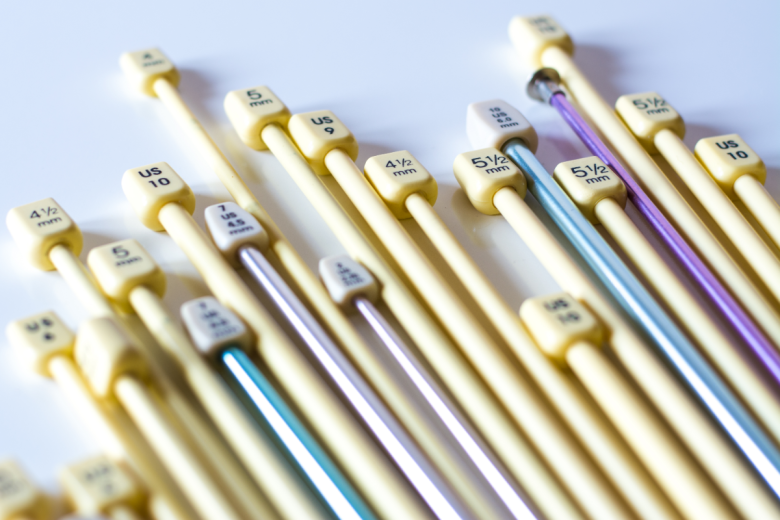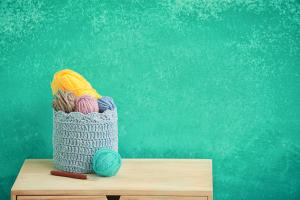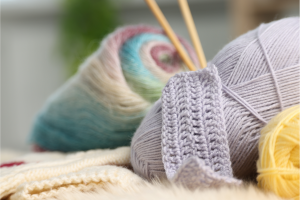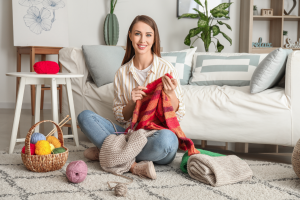When it comes to knitting, choosing the right needle is more than just a matter of preference—it’s crucial for achieving the best results in your projects. Knitting needles come in various types, sizes, and materials, and each one has a specific purpose. The needle you choose can impact the texture, tension, and overall appearance of your finished piece. Whether you’re working on a delicate lace shawl or a cozy winter sweater, selecting the right needle can make all the difference in the ease and outcome of your knitting.
Understanding the different types of knitting needles is essential for any knitter, from beginners to seasoned pros. For instance, straight needles are ideal for flat pieces, while circular needles are perfect for working in the round or managing large projects. The choice between single-pointed or double-pointed needles can also influence the construction of your piece, especially when working on intricate designs or smaller areas like socks and sleeves.
In addition to the shape, the material of your needles plays a significant role in the knitting process. Wooden needles, for example, provide a natural grip on the yarn, making them a great choice for beginners or those working with slippery yarns. On the other hand, metal needles offer a smoother surface for faster knitting, ideal for experienced knitters who prefer speed and precision in their work.
Choosing the right needle size is equally important as the type of needle. The size directly affects the stitch definition and overall fit of your project. For instance, using a larger needle than recommended for a pattern may result in a loose, airy fabric, while a smaller needle could create a tighter, denser texture. It’s crucial to consider the yarn thickness and the pattern instructions when selecting the right needle size to ensure your project turns out as envisioned.
How Knitting Needles Influence the Final Outcome of Your Projects
The type of knitting needle you use not only affects your comfort while knitting but also plays a significant role in how your project turns out. Needles made from different materials, such as wood, metal, or plastic, can change how smoothly the yarn slides and how the stitches are formed. Additionally, the size and shape of the needle determine the size of the stitches and the overall fabric’s drape and texture. Even small changes in needle choice can dramatically affect the finished look, making it essential to understand how to match the right needle to the yarn and pattern you’re using. In this article, we’ll explore the different types of knitting needles and help you make an informed choice for your next project.
Straight Needles: The Most Traditional and Versatile
Straight knitting needles are the classic choice for most knitting projects. These needles are typically used for flat knitting, such as scarves, blankets, and shawls. They are usually sold in pairs and come in a variety of materials including wood, metal, and plastic. One of the key benefits of straight needles is their versatility—they can be used for a wide range of projects, from simple to complex designs. The uniformity of these needles allows knitters to create clean, even stitches, which is especially helpful for beginners. Straight needles are also easy to manage, making them a great choice for those just starting their knitting journey.
Circular Needles: Perfect for Seamless Projects
Circular knitting needles are designed with two needles connected by a flexible cord. These needles are ideal for knitting projects that require a seamless finish, such as sweaters, hats, or blankets. They allow you to knit in the round without having to sew seams together afterward. Circular needles come in various lengths, so you can choose the right size for your project, whether you’re knitting a small cuff or a large blanket. They also help to distribute the weight of your project evenly, making them more comfortable to use for long periods. With circular needles, you can easily create intricate patterns and large pieces, and they are a must-have tool for any serious knitter.
Double-Pointed Needles: Ideal for Specialized Stitch Patterns
Double-pointed needles (DPNs) are a specialized tool used for knitting in the round, particularly for smaller items like socks, gloves, or sleeves. These needles have points at both ends, allowing you to knit seamlessly in a circular manner. DPNs are perfect for intricate patterns that require a small circumference, and they provide excellent control over your stitches. They can also be used for lace knitting or other specialized techniques where precision is important. However, they do require a bit more skill and practice, as managing multiple needles can be tricky for beginners. If you’re aiming to master advanced techniques, double-pointed needles are a great tool to add to your knitting arsenal.
Long vs. Short Cable Needles: Which Is Best for You?
When it comes to cable needles, the length of the cable plays a significant role in how comfortable and efficient your knitting experience will be. Long cable needles are generally used for larger projects or those that require a lot of stitches, such as shawls or blankets. The longer cable provides ample space to hold the stitches, reducing the chance of stretching or bunching. On the other hand, short cable needles are ideal for smaller, more compact projects like hats or sleeves. They are also more portable, making them a great option for knitters who like to take their projects on the go. Choosing between long and short cable needles depends on the size of your project and personal preference, but both offer unique advantages for different types of knitting.
Wooden, Aluminum, and Plastic Needles: Which Material to Choose?
The material of your knitting needles can have a significant impact on your knitting experience. Wooden needles, often made of bamboo or other hardwoods, are smooth and lightweight, offering a natural feel while knitting. They also provide more friction, which helps keep stitches in place, making them ideal for slippery yarns. Aluminum needles, on the other hand, are sleek and smooth, allowing stitches to glide easily across the needle. They are a great choice for knitters who work with heavier yarns or those who prefer a faster knitting pace. Plastic needles are lightweight and often more affordable, but they may not be as durable or smooth as their wooden or metal counterparts. Choosing the right material for your needles comes down to personal preference and the type of yarn you’re using, so it’s worth experimenting with different options to find what works best for you.
Interchangeable Needles: A Practical Option for Multiple Projects
Interchangeable knitting needles are a practical solution for knitters who work on a variety of projects. These needles feature detachable tips and cords, allowing you to switch between different sizes and lengths without purchasing a whole new set. Interchangeable needles are a great investment for knitters who frequently change their projects or want the flexibility to use different sizes without buying multiple sets of needles. They are available in a variety of materials, including metal, wood, and plastic, and often come in a convenient carrying case for easy organization. For those who love versatility and efficiency, interchangeable needles are an excellent addition to any knitting kit.
How Needle Size Affects Tension and Yarn Type
One of the most important factors to consider when choosing knitting needles is the size of the needle. The needle size influences the tension of your stitches, which can dramatically affect the appearance and fit of your finished project. A larger needle creates looser stitches, which results in a more airy, open fabric. This is ideal for lightweight, drapey fabrics like lace or open weave patterns. Conversely, a smaller needle results in tighter stitches, perfect for dense fabrics like blankets or socks. It’s important to match your needle size to the recommended gauge for your pattern to ensure the correct fit and texture. Additionally, different types of yarn may require different needle sizes. Thicker yarns typically work better with larger needles, while finer yarns require smaller needles to achieve the proper tension. Experimenting with different needle sizes is key to finding the right match for your project.
Knitting offers more than just a creative outlet; it provides a therapeutic escape from the stresses of daily life. As you focus on each stitch and pattern, the mind is able to quiet the noise of the outside world, creating a space for relaxation and mental clarity. This calming effect has made knitting a popular choice for people looking to unwind and recharge, whether during moments of anxiety, sadness, or fatigue.
Additionally, knitting encourages mindfulness, helping individuals stay present in the moment. The repetitive nature of the craft allows you to engage fully with the task at hand, promoting a deep sense of calm. This meditative quality can have significant benefits for mental health, including reduced stress and improved mood, making knitting an effective tool for self-care.
Beyond the individual benefits, knitting also fosters a sense of accomplishment and pride. Each completed project, no matter how simple, provides a visual reminder of the time and effort invested, boosting self-esteem and confidence. This feeling of achievement can be especially empowering for those who struggle with feelings of inadequacy or uncertainty.
In addition to fostering personal well-being, knitting also encourages creativity and self-expression. The act of choosing colors, textures, and patterns allows knitters to showcase their unique styles and preferences. Whether you follow a pattern or design your own, knitting becomes a form of art that reflects your individual personality. This creative aspect adds another layer of fulfillment to the process, as each project becomes a tangible manifestation of your ideas and imagination.
Moreover, knitting can be a social activity that brings people together. Joining knitting groups or sharing your projects with friends and family can create bonds and provide a sense of community. The shared experience of creating something beautiful with your hands fosters connection, support, and inspiration, enriching the mental and emotional benefits of the craft.
Ultimately, the joy of knitting lies not just in the finished project but in the journey of creating it. The process offers an opportunity for self-reflection, personal growth, and relaxation. Whether you’re a seasoned knitter or just starting out, the positive impact knitting can have on your mental well-being is undeniable. So, pick up your needles, find your favorite yarn, and begin a project that will not only enhance your creativity but also nurture your mental health.




